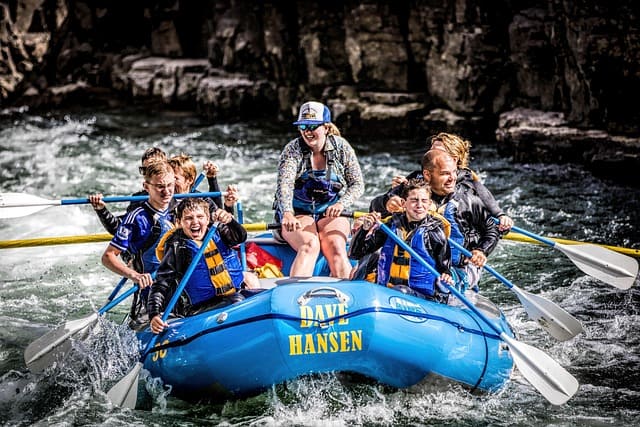Sunkoshi River Rafting
Overview
Outline Itinerary for Sun Koshi River Rafting
-
Day: 01
:
Drive from Kathmandu to Dolalghat & Start Rafting
-
Day: 02
:
Raft from Dolalghat to Khurkot
-
Day: 03
:
Raft from Likhu Khola to Khurkot
-
Day: 04
:
Raft from Likhu Khola to Harkapur
-
Day: 05
:
Raft from Harkapur to Rai Ghat
-
Day: 06
:
Raft from Rai Ghat to Bander Ghat
-
Day: 07
:
Raft from Bander Ghat to Bonjur Ghat
-
Day: 08
:
Raft from Bonjur Ghat to Barahchhatra
-
Day: 09
:
Barahchhatra to Chatara & Drive Back to Kathmandu
Detailed Itinerary for Sun Koshi River Rafting
Drive from Kathmandu to Dolalghat & Start Rafting
- Accommodation: Resort
- Meal: B,L,D
Raft from Dolalghat to Khurkot
- Accommodation: Resort
- Meal: B,L,D
Raft from Likhu Khola to Khurkot
- Accommodation: Resort
- Meal: B,L,D
Raft from Likhu Khola to Harkapur
- Accommodation: Resort
- Meal: B,L,D
Raft from Harkapur to Rai Ghat
- Accommodation: Resort
- Meal: B,L,D
Raft from Rai Ghat to Bander Ghat
- Accommodation: Resort
- Meal: B,L,D
Raft from Bander Ghat to Bonjur Ghat
- Accommodation: Resort
Raft from Bonjur Ghat to Barahchhatra
- Accommodation: Resort
- Meal: B,L,D
Barahchhatra to Chatara & Drive Back to Kathmandu
- Accommodation: Resort
- Meal: B,L,D
Route Map
Trip Highlights
- Float through breathtaking valleys, lush forests, and terraced hillsides, with views of the towering Himalayas in the distance.
- Whether you’re a beginner or an experienced rafter, Sun Koshi offers rapids and stretches suitable for every skill level.
- Keep an eye out for local wildlife, including various bird species and riverside fauna, as you navigate the river.
- Pass by traditional Nepali villages along the riverbanks, giving a glimpse into rural life and local culture.
- Enjoy an extended adventure with overnight camping along the river, complete with bonfires and local meals.
- Safety is a priority, with trained guides providing instructions, life jackets, and all necessary equipment.
- Balance the thrill of rapids with peaceful stretches of calm water, perfect for soaking in the surroundings.
- Located just a few hours’ drive from Kathmandu, it makes it accessible for day trips or weekend adventures.
- Ideal for friends, families, or team-building trips, with rafting suited for group participation.
Sun Koshi River Rafting Images

Cost Inclusion & Exclusion
Include
- Professional rafting guides and safety kayakers
- All safety equipment (helmet, life jacket, paddle, wetsuit if required)
- Rafting permits and national park fees
- Camping equipment (tents, mats, communal dining setup)
- Three meals a day with tea, coffee, and snacks
- Transportation from Kathmandu to the rafting start point (Dolalghat/Khurkot)
- Return transportation from Chatara back to Kathmandu (or nearby town/airport)
- First aid kit and emergency support
Exclude
- Personal expenses (alcohol, soft drinks, snacks)
- Sleeping bag and personal gear (though some companies rent these)
- Travel insurance (mandatory for rafting trips)
- Tips for guides and crew
- Optional extensions to Chitwan National Park

